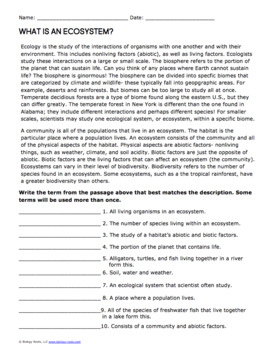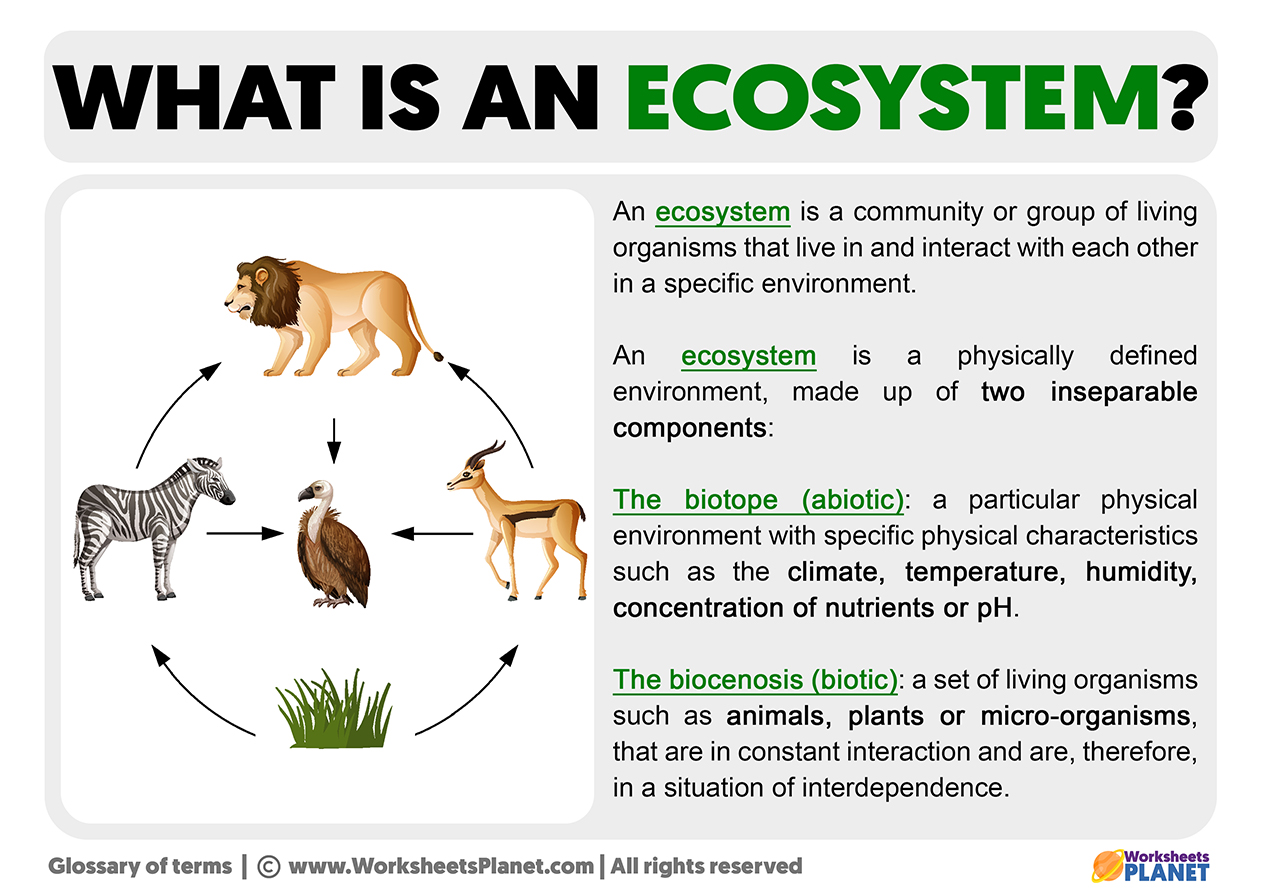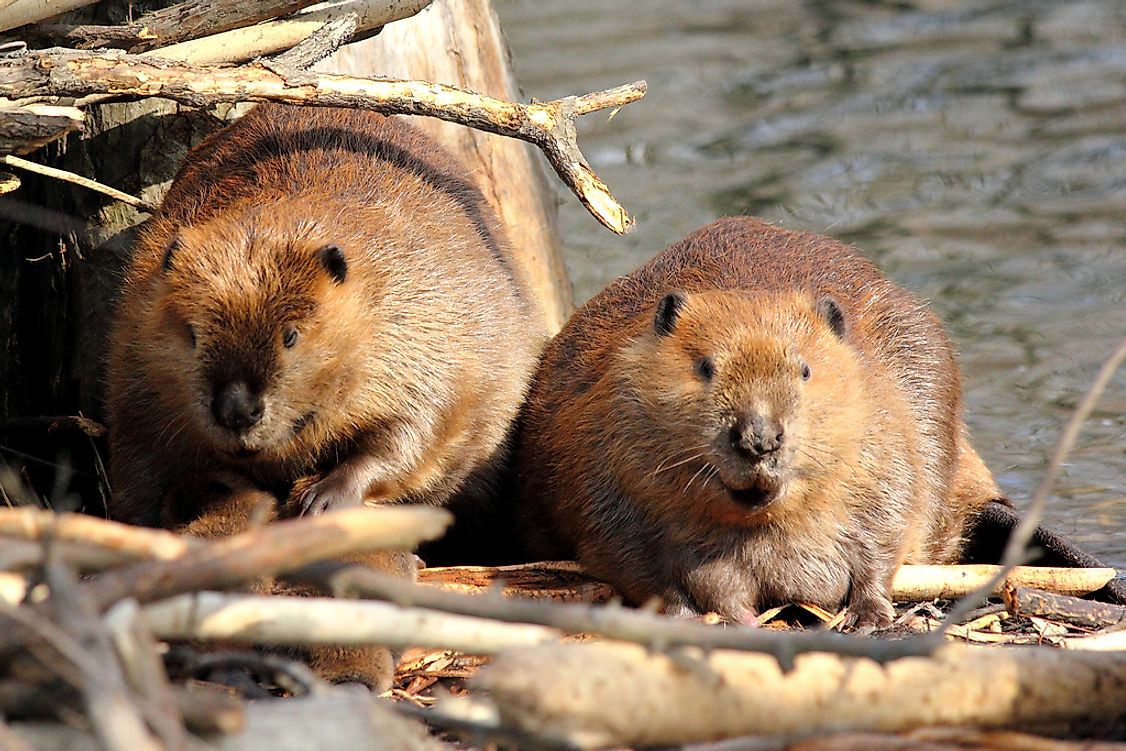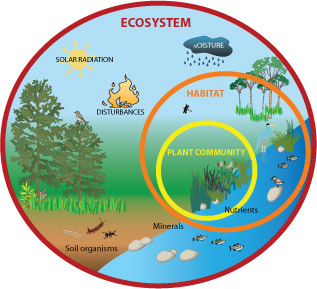Topic meaning of the ecosystem: Explore the essence of ecosystems, where life intertwines in delicate balance, revealing the vital connections between organisms and their environment, fostering a deep appreciation for nature"s complex web.
Table of Content
- What are the components that make up an ecosystem and how do they interact with each other?
- Definition and Importance of Ecosystems
- Components of Ecosystems: Biotic and Abiotic Factors
- Types of Ecosystems: Terrestrial, Aquatic, and Marine
- YOUTUBE: What Is An Ecosystem
- Energy Flow and Nutrient Cycles in Ecosystems
- Ecosystem Services: Benefits to Humanity and the Environment
- Threats to Ecosystems and Conservation Efforts
- Role of Ecosystems in Climate Regulation and Biodiversity
- Human Impact on Ecosystems and Sustainable Practices
- Case Studies: Successful Ecosystem Restoration Projects
- Future of Ecosystems: Challenges and Opportunities
What are the components that make up an ecosystem and how do they interact with each other?
To understand the components that make up an ecosystem and how they interact with each other, we can break it down into the following key elements:
- 1. Abiotic Factors: These are non-living components such as sunlight, temperature, water, soil, and nutrients that play a crucial role in the ecosystem.
- 2. Producers: These are the plants and other photosynthetic organisms that convert sunlight into energy through photosynthesis.
- 3. Consumers: These are organisms that feed on other organisms. They can be herbivores, carnivores, or omnivores.
- 4. Decomposers: These organisms break down dead organic matter, releasing nutrients back into the ecosystem.
- 5. Interactions: Various interactions occur in an ecosystem, such as predation, competition, symbiosis, and mutualism, which shape the dynamics of the ecosystem.
These components interact with each other in a complex web of relationships:
- Producers convert sunlight into energy through photosynthesis, providing food for themselves and other organisms.
- Consumers feed on producers and other consumers, transferring energy through the food chain.
- Decomposers break down dead organic matter, releasing nutrients that are taken up by producers to continue the cycle.
- Abiotic factors such as sunlight and water influence the growth of plants and the behavior of animals, shaping the ecosystem.
- Interactions between different species, such as predation and competition, impact population dynamics and biodiversity within the ecosystem.
This interconnected network of components and interactions forms a delicate balance within the ecosystem, ensuring the functioning and sustainability of the environment.
READ MORE:
Definition and Importance of Ecosystems
An ecosystem encompasses a community of living organisms in conjunction with the nonliving components of their environment, interacting as a system. These biotic and abiotic elements are linked through nutrient cycles and energy flows, creating a complex and interconnected network that supports life on Earth.
The importance of ecosystems cannot be overstated. They provide essential services that sustain life, including:
- Oxygen production through photosynthesis
- Carbon sequestration, mitigating climate change
- Water purification and regulation of hydrological cycles
- Soil formation and nutrient recycling
- Habitat for a vast array of biodiversity
- Natural resources for human use, such as food, medicines, and raw materials
Understanding the definition and importance of ecosystems is crucial for conservation efforts and ensuring the sustainability of our planet for future generations.

Components of Ecosystems: Biotic and Abiotic Factors
Ecosystems are dynamic entities composed of living (biotic) and non-living (abiotic) components. Each plays a crucial role in the ecosystem"s functioning, influencing the survival and growth of organisms within it.
Biotic Factors: These are the living components of an ecosystem, including:
- Plants: They are primary producers, converting solar energy into food through photosynthesis.
- Animals: Ranging from herbivores that consume plants to carnivores that eat other animals and omnivores that feed on both.
- Microorganisms: Including bacteria, fungi, and algae, which play vital roles in nutrient recycling.
Abiotic Factors: These non-living components significantly impact the environment and the organisms living within it:
- Water: Essential for all living organisms, influencing their distribution and activities.
- Soil: Varies in composition and provides nutrients and a home for many organisms.
- Climate: Determines temperature, sunlight availability, and weather patterns, directly affecting ecosystem productivity.
- Air: Supplies oxygen for respiration and carbon dioxide for photosynthesis.
Together, biotic and abiotic factors create the unique and balanced environment of each ecosystem, supporting a diverse range of life forms.
Types of Ecosystems: Terrestrial, Aquatic, and Marine
Ecosystems are broadly categorized into three main types based on their environments: terrestrial, aquatic, and marine. Each type supports distinct communities of plants and animals adapted to their specific habitats.
Terrestrial Ecosystems
Terrestrial ecosystems are found on land and include forests, grasslands, deserts, and tundra. These ecosystems vary greatly over the earth and are influenced by the climate, soil type, and altitude. For example, forests can be further divided into tropical, temperate, and boreal forests, each with unique flora and fauna.
Aquatic Ecosystems
Aquatic ecosystems are water-based environments and can be fresh water or salt water. Freshwater ecosystems include rivers, lakes, streams, and wetlands, providing habitat for a wide variety of plants, invertebrates, and fish. Aquatic plants play a critical role in these ecosystems, providing oxygen and food for other organisms.
Marine Ecosystems
Marine ecosystems cover over 70% of the Earth"s surface and include oceans, coral reefs, and estuaries. These ecosystems are characterized by their salty water and are home to diverse species of fish, mammals, invertebrates, and plants. Coral reefs, often referred to as the "rainforests of the sea," are among the most biodiverse marine ecosystems.
Each ecosystem type plays a vital role in maintaining the balance of life on Earth by providing different habitats, food sources, and climates. Understanding and preserving these ecosystems is crucial for biodiversity, climate regulation, and supporting human life.

What Is An Ecosystem
Ecosystem: Dive into the fascinating world of ecosystems in our video showcasing the beauty and diversity of nature. Explore the intricate web of life and be amazed by the interconnectedness of all living organisms.
Energy Flow and Nutrient Cycles in Ecosystems
The fundamental processes that sustain life within any ecosystem are the flow of energy and the cycling of nutrients. These mechanisms ensure the survival of organisms by providing the necessary resources for growth, reproduction, and maintenance of biological functions.
Energy Flow
Energy flows through an ecosystem in a one-way stream, from primary producers to various levels of consumers and finally to decomposers. The sun serves as the primary energy source for most ecosystems, with plants (autotrophs) capturing solar energy through photosynthesis to create organic molecules. Consumers (heterotrophs), ranging from herbivores to carnivores and omnivores, obtain their energy by consuming other organisms. Decomposers, such as bacteria and fungi, break down dead organic matter, releasing nutrients back into the environment and completing the cycle.
Nutrient Cycles
Nutrients such as carbon, nitrogen, and phosphorus circulate within ecosystems through specific cycles. These cycles involve the absorption of nutrients by organisms for growth and their release back into the environment through waste or decomposition.
- Carbon Cycle: Carbon is fundamental to all life on Earth. It circulates through the ecosystem via processes such as photosynthesis, respiration, decomposition, and combustion.
- Nitrogen Cycle: Nitrogen is essential for the synthesis of proteins and nucleic acids. The nitrogen cycle involves nitrogen fixation, nitrification, assimilation, ammonification, and denitrification, ensuring the availability of nitrogen in forms usable by living organisms.
- Phosphorus Cycle: Phosphorus is a key component of DNA, RNA, and ATP. The phosphorus cycle moves phosphorus from rocks through the biosphere and hydrosphere and back into the soil and sediments.
These cycles are crucial for maintaining ecosystem productivity and stability. Human activities, however, can disrupt these natural processes, leading to environmental degradation. Thus, understanding and preserving the energy flow and nutrient cycles in ecosystems is vital for sustaining life on our planet.
The Dr. Binocs Show Best Learning Videos For Kids Peekaboo Kidz
Learning: Join us on a journey of discovery and growth in our video dedicated to learning. Unleash your potential, acquire new knowledge, and expand your horizons as we explore the endless opportunities for personal and professional development.
Ecosystem Services: Benefits to Humanity and the Environment
Ecosystem services are the many and varied benefits that ecosystems provide to humanity and the environment. These services are critical for our survival and well-being, contributing to our economy, health, and culture. Ecosystem services are commonly grouped into four categories: provisioning, regulating, cultural, and supporting services.
Provisioning Services
These are the products obtained from ecosystems, including:
- Food: Crops, livestock, fish, and seafood.
- Raw materials: Timber, hemp, cotton, and leather.
- Water: For drinking, irrigation, and sanitation.
- Medicinal resources: Many medicines are derived from plants and animals.
Regulating Services
These services include the regulation of ecosystem processes, such as:
- Climate regulation: Both local and global climates are regulated by ecosystems through carbon sequestration and storage.
- Flood regulation: Wetlands absorb excess rainfall, reducing flood risk.
- Disease regulation: Healthy ecosystems can control the spread of certain diseases.
- Water purification: Ecosystems filter pollutants from water, improving its quality.
Cultural Services
These are non-material benefits people obtain from ecosystems through:
- Recreational experiences: Hiking, birdwatching, and other outdoor activities.
- Spiritual enrichment: Many cultures hold natural sites as sacred.
- Educational values: Nature as a context for learning and discovery.
- Aesthetic appreciation: Inspiration from landscapes and wildlife.
Supporting Services
These services are necessary for the production of all other ecosystem services, including:
- Nutrient cycling: The movement and exchange of organic and inorganic matter back into the production of living matter.
- Soil formation: The process by which soil is created through the weathering of rock and decomposition of organic matter.
- Photosynthesis: The process by which green plants and some other organisms use sunlight to synthesize foods from carbon dioxide and water.
Understanding and valuing ecosystem services is essential for sustainable management and conservation of natural resources. By recognizing the full value of these services, we can make informed decisions that support ecosystem health, human well-being, and the resilience of our environment.

Threats to Ecosystems and Conservation Efforts
Ecosystems around the world face numerous threats that can lead to degradation, loss of biodiversity, and disruption of ecological functions. These threats are often interrelated and can exacerbate the effects of one another. However, conservation efforts worldwide aim to mitigate these threats, preserve biodiversity, and maintain ecosystem services.
Major Threats to Ecosystems
- Habitat destruction: Deforestation, urban expansion, agriculture, and mining lead to the loss of habitat for many species.
- Pollution: Air, water, and soil pollution from industrial activities, agriculture, and waste disposal can harm organisms and disrupt ecosystems.
- Climate change: Rising temperatures, altered precipitation patterns, and increased frequency of extreme weather events can change habitats and threaten species adapted to specific climate conditions.
- Invasive species: Species introduced to new areas can outcompete native species for resources, leading to declines or extinctions.
- Overexploitation: Overfishing, hunting, and harvesting at unsustainable rates can deplete species and disrupt ecological balance.
Conservation Efforts
Efforts to conserve ecosystems and protect biodiversity are diverse and include both local and global initiatives:
- Protected areas: Establishing national parks, wildlife reserves, and marine protected areas to preserve habitats and species.
- Legislation: Enacting laws and regulations to protect endangered species, regulate emissions, and manage natural resources sustainably.
- Restoration projects: Rehabilitating degraded ecosystems through reforestation, wetland restoration, and the removal of invasive species.
- Community involvement: Engaging local communities in conservation efforts through education, sustainable livelihood programs, and participatory management.
- International agreements: Global efforts like the Convention on Biological Diversity and the Paris Agreement on climate change aim to address environmental issues collectively.
Addressing the threats to ecosystems requires a multifaceted approach that combines scientific understanding, policy-making, and community engagement. Conservation efforts not only aim to protect nature for its intrinsic value but also to preserve the essential services it provides to humanity.
Role of Ecosystems in Climate Regulation and Biodiversity
Ecosystems play a crucial role in regulating the Earth"s climate and maintaining biodiversity, which are essential for the stability and sustainability of our planet. These natural systems work in harmony to balance atmospheric conditions, house a vast array of life forms, and contribute to the health and well-being of the planet and its inhabitants.
Climate Regulation
Ecosystems contribute to climate regulation through a variety of processes:
- Carbon Sequestration: Forests, oceans, and wetlands act as carbon sinks, absorbing CO2 from the atmosphere through photosynthesis and storing it in biomass and soil, reducing greenhouse gas concentrations.
- Temperature Regulation: Vegetation cover and bodies of water can influence local temperatures by providing shade and through evapotranspiration, which cools the air.
- Water Cycle Regulation: Ecosystems play a key role in the water cycle, including precipitation, infiltration, and the distribution of water resources.
Maintenance of Biodiversity
Biodiversity is the variety of life on Earth, and ecosystems provide the habitat and resources necessary for the survival of different species:
- Habitat Provision: Diverse ecosystems such as tropical rainforests, coral reefs, and wetlands offer varied habitats that support a wide range of species.
- Nutrient Cycling: The recycling of nutrients through ecosystems supports plant growth and the food webs that sustain animal populations.
- Genetic Diversity: Ecosystems support genetic variation within species, which is crucial for adaptation to changing environmental conditions and disease resistance.
The interplay between climate regulation and biodiversity is a dynamic balance where ecosystems act to moderate climate conditions while supporting a rich diversity of life. This balance is vital for ecosystem resilience, enabling them to recover from disturbances and continue to provide essential services. Conservation and sustainable management of ecosystems are therefore paramount to preserving these natural processes and ensuring a stable climate and rich biodiversity for future generations.

Human Impact on Ecosystems and Sustainable Practices
Human activities have profound impacts on ecosystems, often leading to degradation, loss of biodiversity, and disruption of natural processes. However, sustainable practices and efforts to mitigate these impacts are increasingly being adopted globally, aiming to ensure the health and resilience of ecosystems for future generations.
Negative Impacts of Human Activities
- Pollution: Industrial waste, pesticides, and plastics contaminate water, air, and soils, affecting both wildlife and human health.
- Land Use Change: Urbanization, deforestation, and agriculture alter landscapes, reducing habitat availability and fragmenting ecosystems.
- Overexploitation: Overfishing, hunting, and unsustainable harvesting of resources lead to species decline and extinction.
- Climate Change: Emissions of greenhouse gases from human activities are altering global climates, impacting ecosystems worldwide.
Sustainable Practices
To reduce negative impacts and promote ecosystem health, a range of sustainable practices are being implemented:
- Conservation Farming: Techniques such as crop rotation, reduced tillage, and organic farming help maintain soil health and reduce erosion.
- Protected Areas: Establishing and enforcing protected areas to conserve biodiversity and habitat.
- Restoration Projects: Rehabilitating degraded ecosystems through reforestation, wetland restoration, and reintroduction of native species.
- Sustainable Resource Management: Implementing quotas and sustainable harvesting methods to ensure the long-term availability of resources.
- Renewable Energy: Transitioning to renewable energy sources to reduce carbon emissions and lessen climate change impacts.
- Waste Reduction and Recycling: Minimizing waste production and increasing recycling efforts to reduce pollution.
Adopting sustainable practices requires collective action from governments, businesses, communities, and individuals. Through education, policy change, and technological innovation, it is possible to reduce human impacts on ecosystems and foster a more sustainable relationship with our planet.
Case Studies: Successful Ecosystem Restoration Projects
Ecosystem restoration projects aim to return degraded, damaged, or destroyed ecosystems to a close approximation of their original condition. Around the world, numerous projects have demonstrated significant successes, contributing to biodiversity conservation, climate change mitigation, and the well-being of local communities. Here are a few notable examples:
Loess Plateau, China
Once one of the most eroded regions in the world, the Loess Plateau underwent a massive restoration project that transformed it into fertile land. Through terrace farming, tree planting, and restricting grazing, the project improved local water retention, reduced soil erosion, and increased agricultural productivity, supporting millions of people.
Kissimmee River, USA
In Florida, the restoration of the Kissimmee River from a canal back to its natural river state has revived the ecosystem. The project restored over 40 square miles of river/floodplain ecosystem, significantly increasing biodiversity, including the return of lost bird species and improvement in water quality.
Arnavon Community Marine Conservation Area, Solomon Islands
The establishment of this marine protected area has led to the recovery of the critically endangered Hawksbill sea turtle population. Community-based conservation efforts have included protecting nesting beaches, monitoring turtle nests, and raising awareness, resulting in increased turtle populations and improved local fisheries.
Yellowstone to Yukon Conservation Initiative, North America
This collaborative effort aims to ensure connectivity for wildlife across a large portion of North America, from Yellowstone National Park to the Yukon. The project focuses on habitat protection, restoration, and the establishment of wildlife corridors, facilitating species migration and ecological resilience.
Great Green Wall, Africa
An ambitious initiative to combat desertification in the Sahel region, the Great Green Wall aims to grow an 8,000km belt of trees across Africa. It not only fights land degradation and enhances biodiversity but also provides jobs and food security for the local populations.
These case studies illustrate the potential for human intervention to positively impact ecosystems and biodiversity. Through dedicated efforts, degraded landscapes can be restored, providing essential ecosystem services and supporting life on Earth.
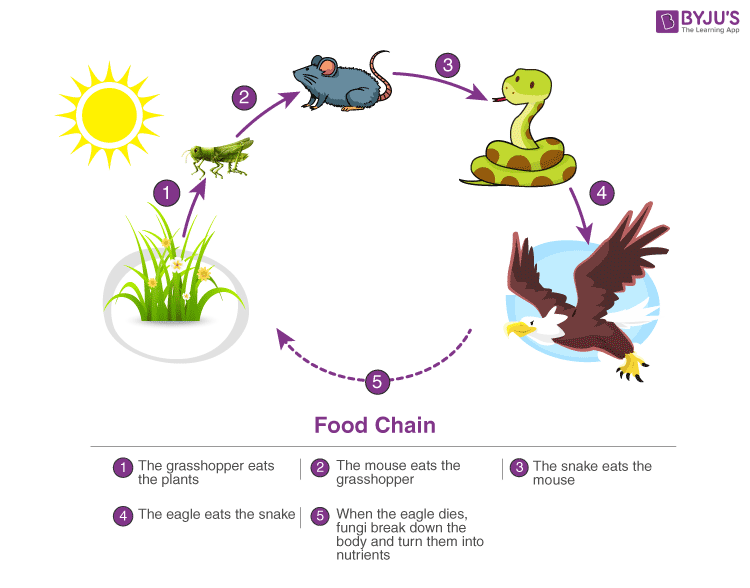
READ MORE:
Future of Ecosystems: Challenges and Opportunities
The future of ecosystems globally faces numerous challenges due to environmental degradation, climate change, and growing human demands on natural resources. However, these challenges also present opportunities for innovation, collaboration, and sustainable management practices that can ensure the resilience and health of ecosystems for future generations.
Challenges
- Climate Change: Increasing temperatures, changing precipitation patterns, and more frequent extreme weather events threaten to disrupt ecosystem balance.
- Biodiversity Loss: Habitat destruction, pollution, invasive species, and overexploitation are leading to an alarming rate of species extinction.
- Pollution: Air, water, and soil pollution from industrial activity, agriculture, and waste disposal continue to degrade ecosystems.
- Land Use Changes: Expanding urban areas, agriculture, and infrastructure development are fragmenting and reducing natural habitats.
Opportunities
- Restoration and Conservation: Large-scale ecosystem restoration projects offer the chance to recover degraded areas and conserve biodiversity.
- Sustainable Practices: Advances in sustainable agriculture, forestry, and fisheries can reduce environmental impact while ensuring resources for future needs.
- Technological Innovation: New technologies in renewable energy, pollution control, and resource management can lead to more efficient and less harmful environmental practices.
- Global Collaboration: International agreements and cooperation are crucial for addressing global challenges like climate change and biodiversity loss.
- Community Engagement: Involving local communities in conservation efforts ensures that sustainable practices are culturally appropriate and economically beneficial.
The future of ecosystems is not predetermined and depends heavily on the actions taken today. By embracing sustainable practices, investing in conservation, and fostering global cooperation, it is possible to mitigate the challenges and seize the opportunities for a healthier planet. The resilience of ecosystems and their capacity to adapt to changes are key to sustaining biodiversity and the services they provide to humanity.
Exploring the meaning of ecosystems reveals a complex web of life and processes essential for our planet"s health and our own survival. Join us in discovering how ecosystems function, their challenges, and the collective efforts needed for their preservation.



